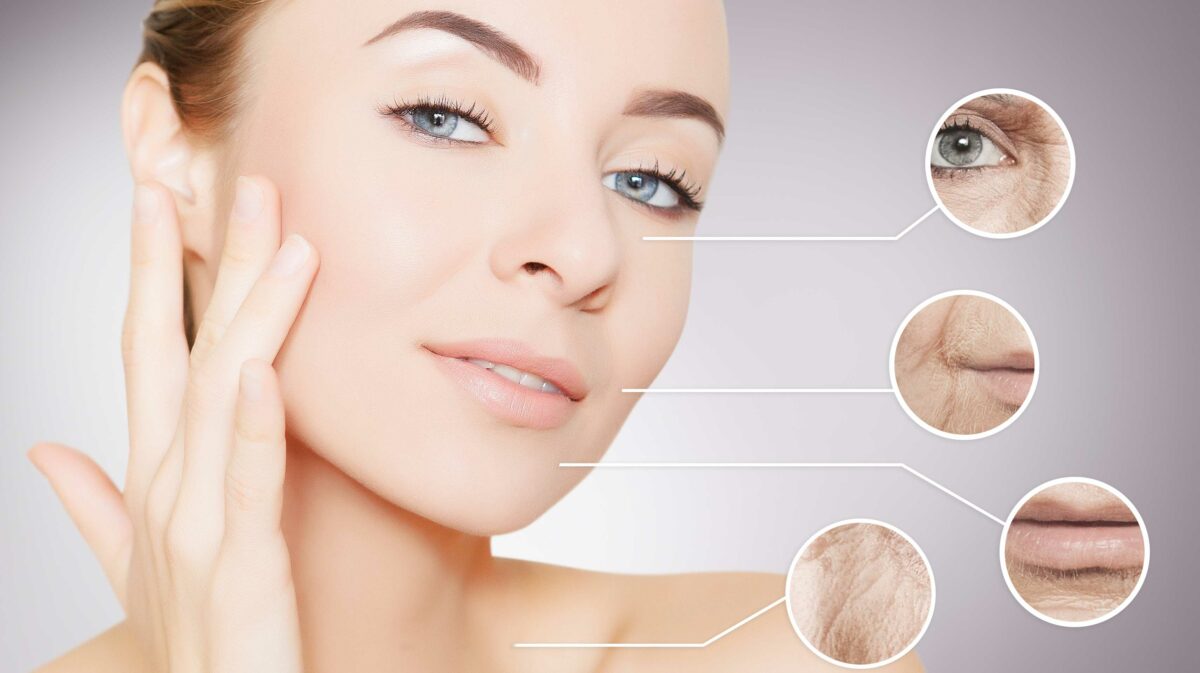PEPTILIFT: Biomimetic Endorphin for Anti-wrinkle and Lifting
Wrinkle treatment: the cosmetics industry and consumers have been paying increasing attention to the concepts of neurocosmetics in recent years.

26 May 2022
Scientific evidence about the benefits of natural and biomimetic cosmetics substances involved in the modulation of human physiology, mood and state of mind through interaction with the skin nervous system has impacted the industry at unprecedented levels.
This scenario led to a new trend for the use of active ingredients targetting specific nervous system pathways in the skin, such as endocannabinoid and opioid systems. Consumer demand is becoming more challenging, to the point where the actual composition and functional characteristics of the cosmetics products used throughout the daily routine have to be compliant to a specific ‘lifestyle’ model.
Biomimetic endorphin with boto-like action
The endogenous opioid system is one of the most studied innate pain-relieving systems. It is very well known in mass culture for its key role in the physiological ‘endorphin rush’, a brain reaction where the endorphins (the neurotransmitters involved in such a biological opioid pathway) are able to trigger a positive state of mind and feelings, such as reduced stress, improved self-esteem, an energised outlook on life and muscle relaxation.
The endorphin rush is a condition typically associated with the feelings that people experience after doing regular work-outs, yoga sessions, sexual activity or after accomplishing satisfactory results so as to reach personal goals.
The power of endorphins in the collective imagination and consumer mind can be grasped intuitively from its etymology: the word derives from Greek works éndon (meaning ‘within’) and Morpheus, the god of dreams in Greek mythology.
Neurocosmetics innovation
Peptilift is a biomimetic endorphin oligopeptide-based complex (INCI: Sh-Pentaptide-5), with a particular tropism for the skin’s neuroendocrine system. It is incorporated into a functional lipo-oligopeptidic delivery system based on conjugated linoleic acid (CLA) glutathione (INCI: Potassium Glutathione Isomerised Linoleate), which selectively activates the opioid signalling directly on the skin and has intrinsic ‘anti-inflammageing’, detoxifying and anti-pollution properties.
The technology is therefore an avant garde solution in line with the neurocosmetic philosophy for anti-ageing care.
The synergistic combination of these specialities makes it possible to counteract the main processes underlying skin ageing, including:
■ Contraction of the facial mimic muscles, resulting in the formation of expression wrinkles
■ Microinflammation, which induces oxidative stress and premature ageing (inflammageing)
■ Reduced cell regeneration rates, causing a reduction in the skin barrier function with loss of water, thinning of the skin, elasticity reduction and wrinkles formation
The physiology of the skin is finely regulated by the complex interaction between the immune, endocrine system and nervous systems. The skin communicates with the nervous system through different receptors, including opioid receptors. These receptors are mainly involved in pain control, but they also regulate skin homeostasis, skin regeneration and wound healing.
In particular, δ-opioid receptors (DOPrs) are able to modulate cell differentiation, migration and proliferation at skin level, while their activation has also been proven to promote the maintenance of the skin barrier function and reduce the production of pro-inflammatory mediators. DOPrs therefore represent an important target for anti-ageing treatments.
Indeed, they are less expressed in the skin of elderly subjects than young subjects. Furthermore, reduced DOPr activity is related to earlier ageing, while scientific evidence has highlighted their increased expression in keratinocytes following UV exposure.

Endorphin neuropeptide
The biomimetic endorphin oligopeptide acts as a presynaptic inhibitor of muscle contraction, thus exerting a boto-like activity aimed at reducing expression wrinkles.
By mimicking a physiological mechanism, it inhibits presynaptic neuron depolarisation in the neuromuscolar junction. The active binds to presynaptic DOPrs, reducing the release of the excitatory neurotransmitter acetylcholine in the synaptic space. As a result of this interaction, it decreases the face mimic muscle fibres’ contractile response by inducing their relaxation, with a resulting reduction of expression wrinkles onset.

In addition to the aforementioned mechanism, the biomimetic endorphin oligopeptide also modulates the activity of keratinocyte and fibroblast hemidesmosomes (promoting their disassembly and skin cell migration toward damaged tissues) as well as that of metalloproteases (MMPs), by specifically targeting the isoforms MMP2 and MMP9, which are involved in the degradability of compromised skin matrix structures and in the reorganisation of the skin regeneration process.
The biomimetic endorphin oligopeptide is therefore proven to promote wound repair processes and, as a DOPrs agonist, it preserves skin homeostasis and regeneration, counteracting skin ageing at multiple levels.
CLA-glutathione
CLA-glutathione is a macromolecule containing CLA condensed with reduced glutathione (GSH). Due to the unsaturated fatty acid portion, it is able to act as a permeation enhancer on biological membranes, thus increasing the delivery of GSH and oligopeptides through the skin.
Moreover, CLA has a well-documented anti-inflammatory action in literature. It induces the biological synthesis of glutathione, promotes skin barrier repair, maintains a balanced skin pH and increases skin hydration, by upregulating skin barrier-related proteins, such as filaggrin.
In addition, CLA significantly and dose- dependently inhibits pro-inflammatory cytokines IL-6, IL-1β, TNF-α and pro-inflammatory enzyme expressions of inducible nitric oxide synthase and cyclooxygenase-2. Its anti-inflammatory effect is associated with the inhibition of IκBα and NF-κB p65 phosphorylation.
Clinical studies have shown that CLA is able to improve the appearance of photoaged skin, providing it with multiple anti-ageing benefits.
Glutathione is known for its antioxidant and skin lightening properties, due to its inhibitory action on melanogenesis. In addition, an in vivo study demonstrated that topical application can beneficially improve skin moisture and reduce wrinkles.

Anti-wrinkle: efficacy tests
In vivo efficacy evaluations were made by comparing a cream containing the biomimetic endorphin oligopeptide to a placebo treatment (data not shown) and a benchmark cream with an anti-wrinkle active. 60 volunteers aged between 40 and 65 with skin ageing signs were selected and divided into three groups.
A single-blind study protocol was used, which included the measurement of the volume, area and depth of the forehead and frown lines, nasolabial folds and crow’s feet. These subjects received an objective evaluation using a standardised numerical scale and were assessed for the degree of skin ageing and the type of skin using Courage+Khazaka’s Complete Skin Investigation (CSI) analysis system.
All the volunteers were evaluated at the beginning and after two and four weeks by using the Visioface 1000D high-resolution camera, also by Courage+Khazaka. This captured an image of their faces, quantified the variation in volume, area and depth of wrinkles and compared wrinkle images during the study period.
The volume of the forehead lines showed a statistically significant average percentage decrease of 22.8% and 55.7% respectively after two and four weeks using the cream with the biomimetic endorphin peptide (Figure 1). The benchmark cream showed lower variation, with statistically significant average values of 18.2% after two weeks and 23.0% after four weeks. The placebo treatment showed statistically insignificant improvement.
The instrumental results, as well as the images of the four-week challenge, suggest a powerful activity induced by the biomimetic endorphin (Figure 2). A similar pattern was observed with the reduction of the frown lines (Figure 3) and nasolabial folds (Figure 4). The biomimetic endorphin-based cream showed significantly superior improvements when compared to the benchmark cream, with overall decreases by 21.37% of the frown line volume and 41.2% of the nasolabial fold volume (Figure 1). Both results outperforming the benchmark product.
The crow’s feet area also showed a significant average percentage decrease of 18.3% after four weeks of using the cream with the biomimetic endorphin (Figure 5).

Lifting and antiageing effect
Tests were also carried out to assess skin hydration, using a Corneometer CM 825, the integrity of the skin barrier (Tewameter TM 300), and skin elasticity and firmness (Figure 6). The biomimetic endorphin treatment showed the most interesting results in the areas of skin elasticity (+49% after four weeks) and skin stretchability (-25%).
The skin stretchability parameter is inversely proportional to skin firmness and hint of increased skin barrier integrity and keratinocyte cells compactness, as analysed using a Cutometer.

In addition to the objective instrumental evaluations, the treatment with biomimetic endorphin also reported significant results superior to the benchmark cream in terms of perceived efficacy expressed by the panellists (Figure 7).

Rapid wrinkle reduction
Neurocosmetics represent the present and the future of the personal care industry, given the growing interest of consumers in the use of biomimetic substances able to interact with physiological components of the skin nervous system. Endorphins, the neurotransmitters typically released by our nervous system during moments of our daily life that are associated with feelings of stress killing and self-esteem boost, play a key role also on the skin as they proved several benefits in anti-ageing and regeneration process.
Kalichem has introduced to the market Peptilift, a speciality based on an innovative biomimetic endorphin (SH-Pentapeptide-5) included in a functional delivery system (CLA Glutathione). The literature and in vivo efficacy studies demonstrate its properties in modulating the neuromuscular junction activity through its peptide interaction with the pre-synaptic δ-opioid receptor, inducing face mimic muscle relaxation and a highly significant anti- wrinkle action. Instrumental assessments highlighted wrinkle volume decrease by 55%, increased skin elasticity by 49% and a significant improvement of skin firmness and tone, along with outstanding values of perceived efficacy in each of the previously mentioned parameters.
The biomimetic endorphin has also been proven to act as agonist of opioid receptors located on epidermal cells, including keratinocytes, and influence the expression of hemidesmosomes, metalloproteases and skin growth factors involved in the stratum corneum regeneration process. These refined mechanisms of action suggest additional applicative solutions to the wrinkle care, such as skin revitalisation and resilience, both of which claims are associated with the active’s proven benefits in improving the skin barrier function, keratinocyte compactness and regeneration after damage.












